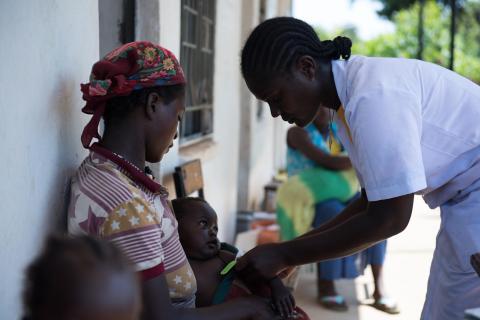Kenya and Malawi: Intestinal disturbances and mortality in complex malnutrition cases
This is a summary of the following paper: Wen B, Farooqui A, Bourden C et al. (2023) Intestinal disturbances associated with mortality of children with complicated severe malnutrition. Communications Medicine, 3, 128. https://link.springer.com/article/10.1038/s43856-023-00355-0
Children with ‘complicated’1 severe malnutrition have particularly high mortality rates. Some evidence points to a relationship between intestinal dysfunction and these poor outcomes, but this has yet to be tested. This nested case-control study sought to evaluate this relationship by testing faecal samples2 from participants at study admissions (before treatment), then sorting participants by non-survivors (cases) and survivors (matched controls) for analysis.
Subjects were enrolled from an existing randomised controlled trial in Kenya and Malawi (Bandsma et al., 2019) and defined as children (aged 6 months to 13 years), with Mid Upper Arm Circumference (MUAC) <11.5cm, or weight-for-height z-score <-3 (aged 6–59 months) or body mass index-for-age z-score <-3 (age ≥60 months), and/or oedematous malnutrition at any age, and having medical complications or a failed appetite test according to WHO guidelines. Due to the stringent enrolment criteria, the sample size (n=68) was limited by sample availability. The study was randomised at a 1:1 ratio.
Non-survivors had a significantly higher prevalence of nutritional oedema (43%) than survivors (24%, p=0.02), with nutritional oedema increasing the odds of mortality by 140% (OR 2.4, 95% CI 1.2–5.1). The proportion of children with diarrhoea was slightly higher in the non-survivor group (54% vs 40%), but there was no significant difference in the odds ratio for mortality (OR 1.8, 95% CI 0.9–3.6). The median time to death for non-survivors was six days (IQR: 4–10). The median time to discharge for survivors was eight days (IQR: 7–11).
There were specific reductions in certain amino acids, monosaccharides, and microbial fermentation products in the non-survivor group. Although short chain fatty acid production – the main fermentation products of the gut microbiome – did not differ between groups, there was a difference in the overall faecal metabolomic signature between survivors and non-survivors. Overall, enteropathy markers did not differ between groups.
This is a small subgroup of particularly sick children, as evidenced by this sample comprising 54% of the mortality cases in the larger parent study, so these findings cannot be generalised to all cases of child malnutrition. The case-control design prevents us from determining the temporal relationship between a cause and an effect, so further studies are needed to validate these findings. The authors also note that the high variability of faecal data may have introduced confounding, although they did take steps to address this. Nevertheless, these findings indicate that intestinal disturbances may have an indirect association with acute mortality.
References
Bandsma R, Voskuijl W, Chimwezi E et al. (2019) A reduced-carbohydrate and lactose-free formulation for stabilization among hospitalized children with severe acute malnutrition: A double-blind, randomized controlled trial. PLoS Med, 16, 2. https://pubmed.ncbi.nlm.nih.gov/30807589/
1 Complicated malnutrition refers to severely malnourished children who require hospital-based management, due to concurrent illnesses or complications.
2 Faecal metabolomic profiling was performed using nuclear magnetic resonance spectroscopy, targeting 68 commonly measured water-soluble faecal metabolites. A separate portion of the sample was used to measure faecal enteropathy markers.


